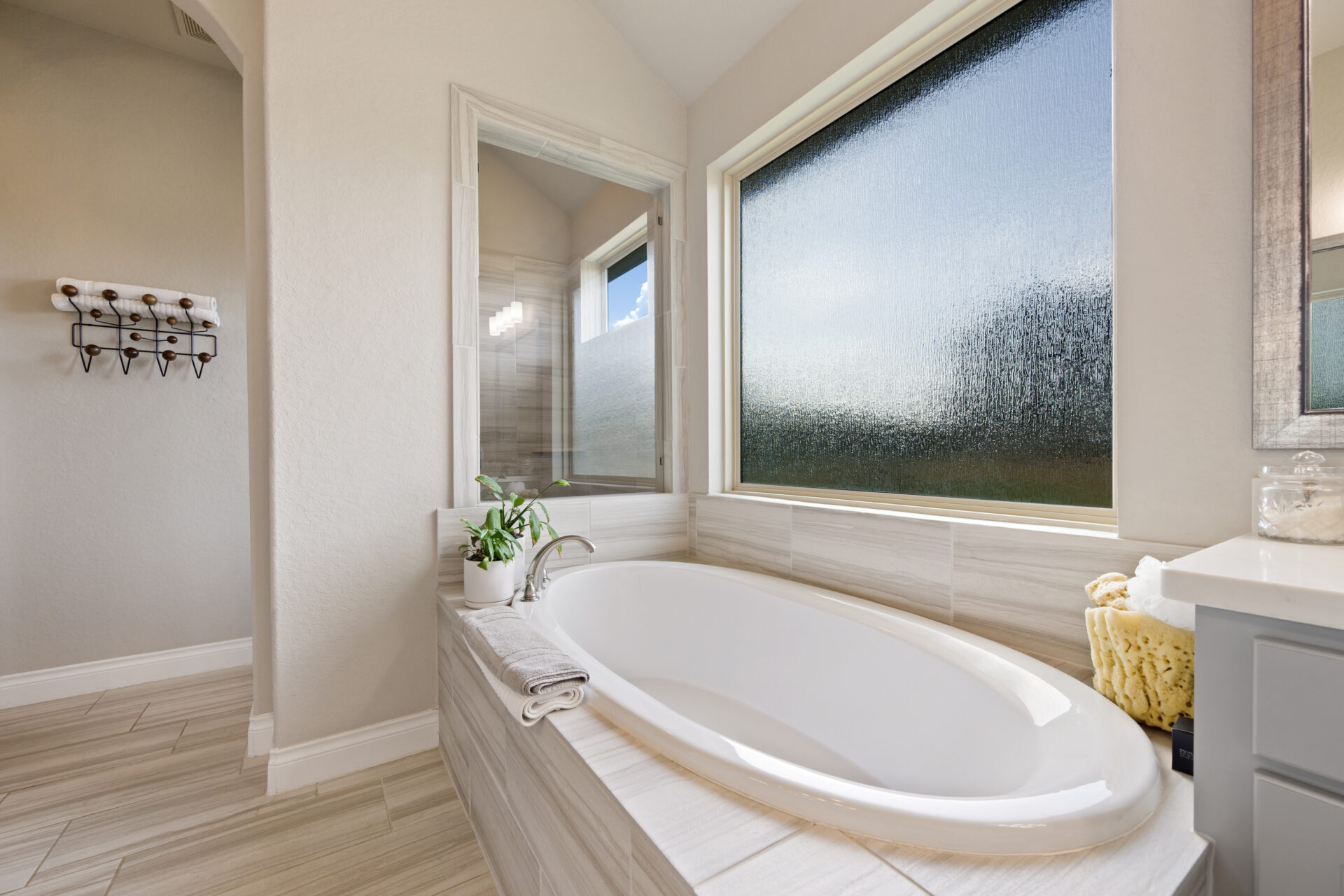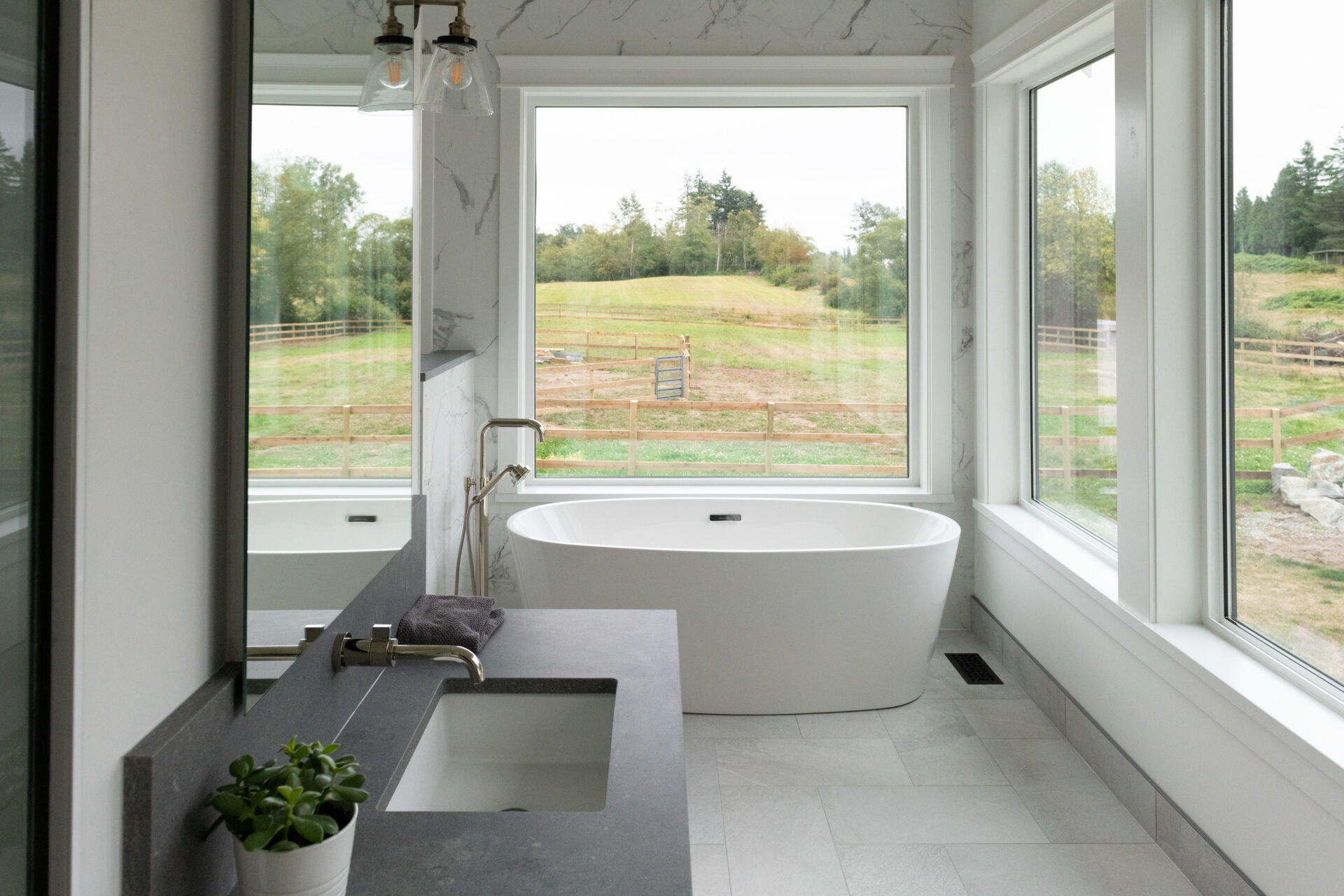Choosing the right window is essential for creating a bright, airy, and private bathroom space. This guide will help you navigate through the key considerations to choose a bathroom window that not only meets your functional needs but also enhances the aesthetic appeal of your bathroom.
Why Bathroom Windows Matter
Natural Light & Ventilation
Bathroom windows significantly enhance a bathroom’s atmosphere and functionality. They introduce natural light, making the space feel more open and vibrant, which can positively impact mood and create the illusion of more space. This natural illumination is not only aesthetically pleasing but also promotes a healthier environment by reducing moisture and humidity, crucial for preventing mold and mildew growth.
Privacy Concerns
Privacy concerns with bathroom windows can be easily addressed through modern solutions such as frosted, tinted, or textured glass, allowing homeowners to enjoy natural light without compromising their privacy. These options provide the perfect balance, ensuring that the bathroom remains a private retreat.
Aesthetic & Design
Moreover, windows add to the bathroom’s aesthetic appeal. They offer an opportunity to enhance the design theme, whether it’s modern minimalism with sleek, large panes or a more classic approach with ornate framing. The right window can serve as a striking design element, elevating the overall look and feel of the bathroom.
Choosing the Right Bathroom Window
Glass Types
Your choice in glass can significantly impact light penetration and privacy. Options include clear, frosted, textured and tinted, each offering different levels of privacy and aesthetic appeal. If unsure, you can opt for a clear glass window and later apply a privacy film or frosted glass spray to achieve similar effects.

Frame Materials
When selecting a bathroom window frame, choosing materials that withstand the humid and wet conditions typical of bathrooms is crucial. Vinyl, fibreglass, and composite materials are ideal for their durability, moisture resistance, and low maintenance needs. Conversely, wood is less suitable due to its vulnerability to moisture, requiring frequent maintenance to prevent issues like warping and mold. Aluminum, while durable and resistant to corrosion, offers limited insulation, making it a less desirable choice due to potential condensation problems in humid bathroom environments.
Fixed vs. Operable Windows
Fixed windows are ideal for uninterrupted views and maximum light. Unlike operable windows, fixed windows offer a sealed design that’s more resistant to direct water exposure, making them a better choice for areas within direct reach of shower or bath water splash. Operable windows, on the other hand, offer the benefit of ventilation to help control moisture and humidity in the bathroom.
Shapes and Sizes
While traditional rectangular windows are versatile, unique shapes like circular, arched, or triangular can add distinctive character to your bathroom. However, these unique shapes are typically fixed due to the challenges in incorporating efficient opening mechanisms without compromising the window’s design or function. The size of the window should balance natural light with privacy, considering the bathroom’s orientation and proximity to neighbours.

Window Treatments
While less common, there are waterproof window treatments specifically designed for high-moisture environments available that allow light and privacy levels to be adjusted as needed.
Conclusion
The right bathroom window enhances your bathroom by balancing functionality with design. Consider the window’s material, style, shape, and privacy options to create a space that feels both personal and inviting. Unique shaped windows, typically being fixed, contribute to the room’s aesthetic without the functionality of ventilation, so pairing them with operable windows might be necessary for a balanced design.
